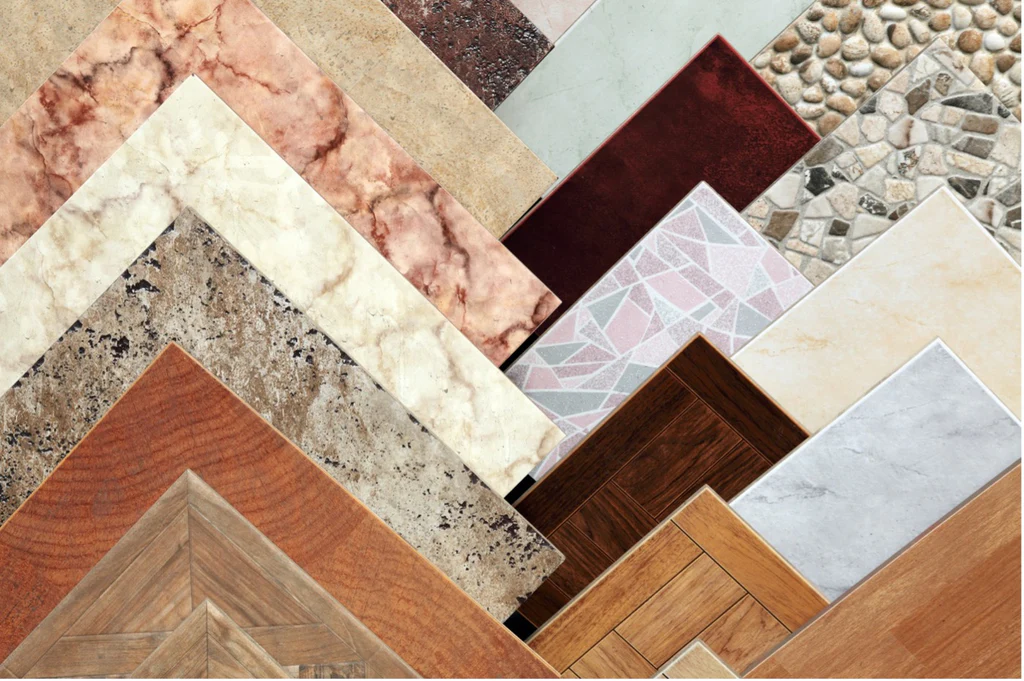As the global emphasis on sustainability grows, eco-conscious consumers are seeking products that are not only functional and aesthetically pleasing but also environmentally responsible. Floor tiles, a cornerstone of modern interior design, are no exception. Choosing the most sustainable floor tile can significantly reduce your home’s or business’s carbon footprint while ensuring durability and style. But which tile truly earns the title of “most sustainable”? Let’s explore.
1. What Makes a Floor Tile Sustainable?
Sustainability in floor tiles is determined by several factors:
- Material Sourcing: Tiles made from renewable or recycled materials are more sustainable.
- Energy Efficiency in Production: Manufacturing processes that consume less energy and use renewable energy sources are preferred.
- Longevity: Durable tiles reduce the need for frequent replacements, minimizing waste.
- End-of-Life Recycling: Tiles that can be recycled or safely returned to the earth at the end of their lifecycle are ideal.
2. Types of Sustainable Floor Tiles
a. Ceramic Tiles
Ceramic tiles are made from natural clay and other minerals, making them a sustainable option if sourced responsibly. They are:
- Energy-efficient: Fired at high temperatures for durability.
- Long-lasting: Highly resistant to wear, reducing replacement needs.
- Recyclable: Can be crushed and reused in new tiles or other applications.
Drawbacks: Energy-intensive firing process and possible mining impacts if materials are not responsibly sourced.
b. Porcelain Tiles
Porcelain tiles are a type of ceramic tile made from finer clay and fired at higher temperatures. They share many of the benefits of ceramic tiles but are denser and more durable. Key features include:
- Low porosity: Excellent for water resistance, making them ideal for bathrooms and kitchens.
- Recyclability: Can be reused in construction aggregates.
Drawbacks: High firing temperatures increase energy use during production.
c. Recycled Glass Tiles
Recycled glass tiles are made from post-consumer or industrial glass waste. Their sustainability credentials include:
- Waste reduction: Repurposing discarded glass.
- Aesthetic versatility: Available in a wide range of colors and finishes.
- Durability: Resistant to stains and scratches.
Drawbacks: Energy-intensive melting process and higher costs compared to other tiles.
d. Natural Stone Tiles
Natural stone, such as marble, slate, and granite, has been used for centuries. While not manufactured, its sustainability depends on:
- Responsible quarrying: Ethical practices minimize environmental damage.
- Longevity: Extremely durable and timeless.
- Recyclability: Can be repurposed as aggregate or other materials.
Drawbacks: Quarrying impacts, transportation emissions, and sealing requirements.
e. Terracotta Tiles
Terracotta, a type of unglazed ceramic, is highly sustainable when sourced and produced responsibly. Benefits include:
- Natural materials: Made from clay, often locally sourced.
- Biodegradability: Can break down naturally at the end of its life.
- Thermal properties: Excellent for maintaining indoor temperature.
Drawbacks: Porous nature requires sealing and may not be ideal for wet areas.
f. Cork Tiles
Cork tiles are made from the bark of cork oak trees, which regenerate after harvesting. Their advantages include:
- Renewable resource: Harvesting doesn’t harm the tree.
- Thermal and acoustic insulation: Reduces energy use and noise pollution.
- Lightweight and flexible: Easier to transport and install.
Drawbacks: Susceptible to water damage and fading in direct sunlight.
g. Linoleum Tiles
Often confused with vinyl, linoleum is made from natural materials like linseed oil, cork dust, and wood flour. Sustainability highlights include:
- Biodegradability: Fully decomposes without leaving harmful residues.
- Non-toxic: Contains no volatile organic compounds (VOCs).
- Durability: Lasts decades with proper care.
Drawbacks: Limited style options compared to ceramic or porcelain tiles.
3. Key Certifications for Sustainable Tiles
When selecting sustainable tiles, look for these certifications:
- LEED (Leadership in Energy and Environmental Design): Ensures tiles meet green building standards.
- Cradle to Cradle Certification: Assesses a product’s environmental impact throughout its lifecycle.
- GreenGuard Certification: Verifies low chemical emissions for healthier indoor air quality.
- Environmental Product Declaration (EPD): Provides detailed information about a product’s environmental impact.
4. Energy Efficiency and Carbon Footprint
Manufacturing tiles can be energy-intensive. Innovations in renewable energy and eco-friendly production methods are making a difference:
- Solar-powered kilns: Reduce reliance on fossil fuels during firing.
- Water recycling systems: Lower water usage during production.
- Locally sourced materials: Minimize transportation emissions.
5. The Role of Recycling in Tile Sustainability
Recycling plays a crucial role in making tiles sustainable. Examples include:
- Closed-loop recycling: Manufacturers reuse waste materials from production.
- Post-consumer recycling: Tiles can be crushed and reused in construction or landscaping.
- Innovative materials: Some brands incorporate recycled plastics or industrial byproducts.
6. Innovative Sustainable Tile Brands
Several brands are leading the way in sustainable tile production:
- Fireclay Tile: Uses 100% renewable energy and recycled materials.
- Bedrosians Tile & Stone: Offers a range of eco-friendly products with detailed environmental certifications.
- EcoDomo: Specializes in tiles made from leather and other recycled materials.
7. Tips for Choosing Sustainable Tiles
- Research manufacturers: Prioritize companies with transparent sustainability practices.
- Check certifications: Ensure tiles meet recognized environmental standards.
- Think long-term: Opt for durable tiles that align with your design vision.
- Consider the whole lifecycle: Factor in production, installation, maintenance, and disposal.
8. The Future of Sustainable Tiles
Advancements in technology and consumer demand are driving innovation:
- 3D printing: Reduces material waste and allows precise customization.
- Bio-based materials: Emerging options include tiles made from algae and mycelium.
- Smart tiles: Incorporate energy-efficient features, such as light reflectivity to reduce indoor lighting needs.
Conclusion
Determining the most sustainable floor tile depends on your specific needs and values. Recycled glass tiles and cork tiles stand out for their renewable and waste-reducing properties, while ceramic and porcelain tiles offer long-lasting, versatile options. By prioritizing sustainability, you can contribute to a greener planet without compromising on style or functionality. Whether you’re renovating your home or designing a commercial space, the right tile choice makes all the difference—for you and the environment.
